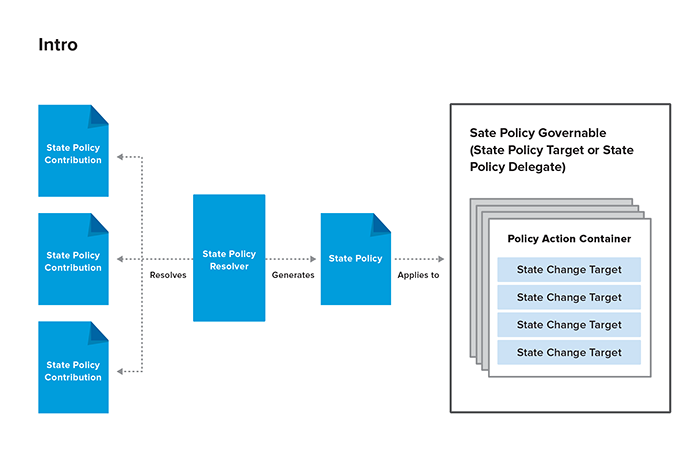Introduction to State Policies
Introduction to State Policies
To understand how state policies work, it's important to understand the different objects that interact with them.
| State Policy | A set of rules that can be used to determine the state of widgets (editable, read-only, or disabled). |
|---|---|
| State Policy Contribution | Maps a State Policy Target to a State Policy. There may be multiple State Policies that apply to a given State Policy Target. For example, there may be one State Policy governing access to data from a particular catalog. There may also be a State Policy governing access to objects in a particular Change Sets. In this case, the rules of both State Policies need to be applied. |
| State Policy Resolver | Resolves the State Policy Contributions and creates a single State Policy that can be applied to State Policy Targets. |
| State Policy Governable | An object, such as a Dialog, Wizard, Page, or Editor, that can have a State Policy applied to it. It contains one or more Policy Action Containers. There are two types of Goverable:
|
| State Policy Target | A State Policy Governable that receives its State Policy through a direct assignment. Dialogs, Editors, and Actions are examples of State Policy Targets. |
| State Policy Delegate | A State Policy Governable that inherits its State Policy from its container. Pages and Sections are examples of State Policy Delegates. |
| Policy Action Container | Contains State Change Targets. |
| State Change Target | A UI control whose state may change depending on different factors. |

